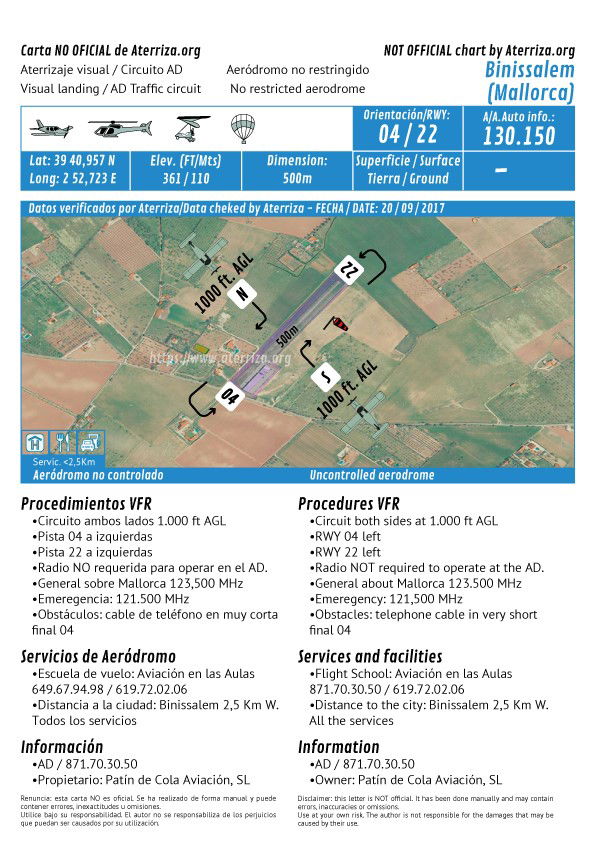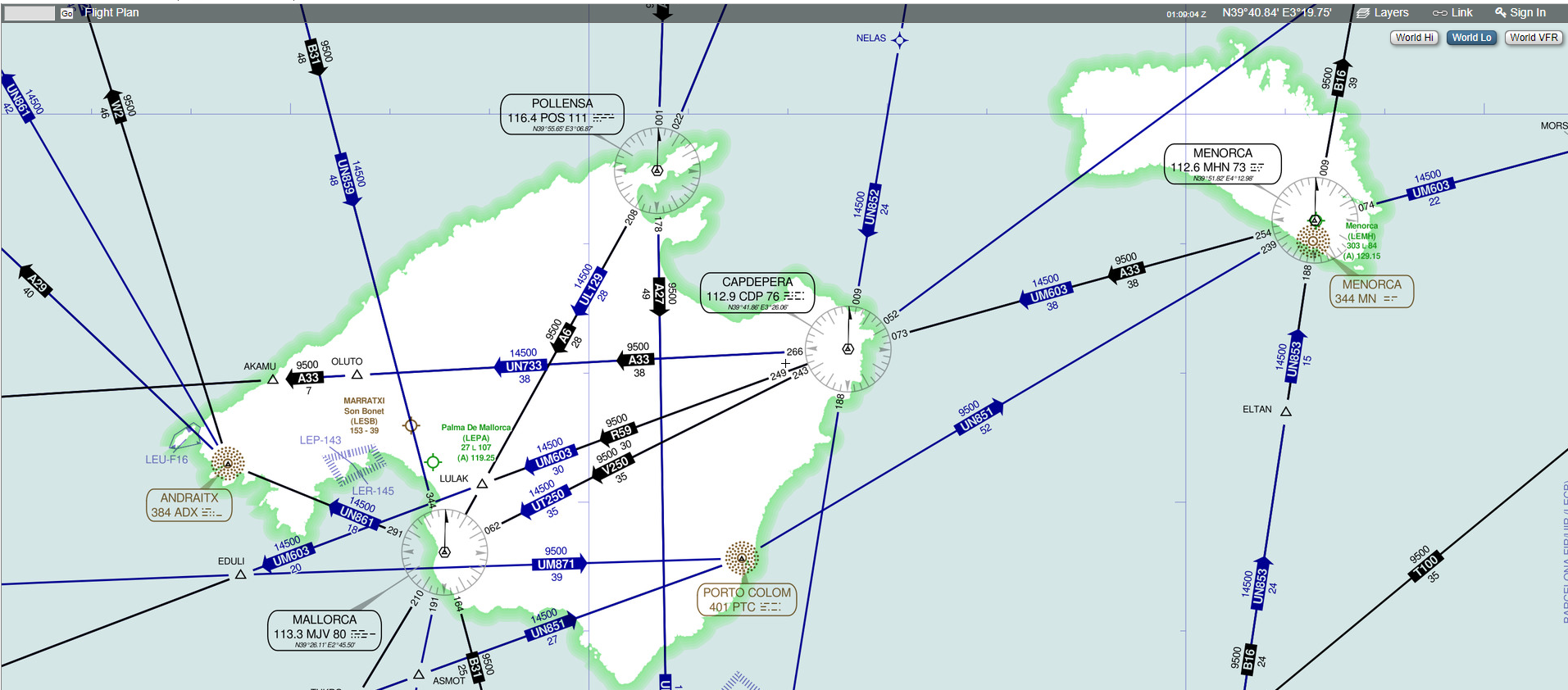Preflight Planning
Preflight Planning
Read and familiarize yourself with the Local Flight Rules for Son Bonet Airport (LESB), which you can download on this webpage
Safe pre-flight preparation involves pilots checking the following items: -
Pre-Flight Planning Checklist
1) PILOT
a) Are you safe to fly? Are you fit to fly the aircraft and in a satisfactory physical and mental state? Check IM SAFE
b) Licence and Rating, valid and carried. Including photo ID for Part-FCL licences.
c) Medical certificate, valid and carried.
d) Current to fly under school / club rules.
e) Do you have recency? In order to legally fly with passengers on board, you are required to be recent i.e. you have flown 3 takeoff and 3 landings in the past 90 days
2) AIRCRAFT
a) Check onboard Aircraft Document Folder
According to the regulations, certain aircraft documents must be checked and carried on board. Check the aircraft documentation folder for the: -
- AFM - (Aircraft Flight Manual / Pilot Operating Manual);
- Certificate of Registration - original;
- Certificate of Airworthiness - original CofA, ARC (validity of Airworthiness Review Certificate),
Note: Certificate of Release to Service (if aircraft has just returned from maintenance) is NOT required for non-commercial aircraft.
- Noise certificate, if applicable.
- List of specific approvals, if applicable
- Aircraft radio license, if applicable;
- Third-Party Liability Insurance certificate (check dates valid)
- Journey Log
These documents, manuals and certificates must be carried on board every flight you undertake. Originals are required if you fly away from home base. Copies are acceptable for local training flights or circuit training at home base LESB, as originals are readily available in the airport office.
Ref: NCO.GEN.135
b) Mass & Balance. Mass, balance and performance within limits for aircraft and aerodromes.
c) Airworthy condition. Perform aircraft walkaround. Perform 'A' Check prior to first flight of the day. (See CAP 411 , page 22/40)
d) Equipment. Check onboard maritime survival equipment, life vests, life raft, ELT, torch, waterproof mobile phone pouch, spare battery/power bank
Pre-flight inspection complete.
3) Pre-Flight Planning Preparation
With regards to the operation of the flight, also be aware of the following documentation that is needed for each flight (even on local flights A-A):
F.L.I.M.N.O
a) Flight Plan - File a flight plan (Select language, 'new user' - Open a free account)
To file a flight plan in Spain, register with ICARO
ICARO login: -
https://notampib.enaire.es/icaro/login.jsp
Mandatory submission of a flight plan according to AIP (ENR 1.10 Flight Planning) for all flights which:-
- are executed partially or entirely in controlled airspaces
- want to land on a controlled aerodrome
- want to cross the state border
Learn how to file a flight plan here
b) Interception - Procedures and visual signals information for use by intercepting and intercepted aircraft; (Top tip: talk on 121.5 - more here and here and here and here).
c) MEL - Check Minimum Equipment List (MEL) or CDL (Configuration Deviation List), if applicable
d) Navigation - Current and suitable aeronautical charts for the route, area of the proposed flight and all routes along which it is reasonable to expect that the flight may be diverted too. Did you update your navigational tools (e.g. SkyDemon)? Check moving map device current and route programmed.
Destination and Alternate aerodromes planned and adequate.
Prior permission obtained for aerodromes (if applicable).
Check route planning in relation to...
- Restricted Areas (LOR), Danger Areas (LOD)
- Airspaces that require Clearance (CTR, MTMA, MCTR, Airspace Classes D, C,...)
- Entry/exit points of Control Zones (CTR)
- Border crossings (place/altitude/estimated time when crossing the state border)
Useful flight planning Apps: e6bx.com; Use gcmap.com to plot a route map.
e) Other - Any other documentation that may be pertinent to your flight or is required by the States concerned with the flight, for example: -
Remember NWSE - North, West, South, East i.e. NOTAMS, Weather, Aircraft Technical Status, Equipment
- NOTAMS
- Weather briefing
- Aircraft Technical Status
- Equipment (Life vest, SkyDemon etc)
- Mass and Balance calculations
- Performance calculations
- Your license, medical and photo ID
- Border Force/Immigration and/or Special Branch notified (if applicable)
Check: -
- NOTAM's
Check active NOTAM's prior to the flight along the route, departure, destination and en-route alternate aerodromes.
Check: -
- Son Bonet Airport NOTAM's: notaminfo.com or aviapages.com or rocketroute.com
- VFR Guide for Mallorca/Son Bonet Airport / Spain: AIP.ENAIRE.es
- LESB pilot reports: You-Fly.com
- LESB Fuel: rocketroute.com
- Chart updates, AIP, AICs and NOTAMs are available at www.ais.org.uk
- SafeSky
- Weather checked and is suitable.
Obtain weather information for: -
- Departure airfield
- Destination airfield
- En-route alternate airfield
- Destination Alternate airfield
- the expected enroute weather
- active SIGMET and AIRMET
- GAFOR (General Aviation Forecast Europe)
You can check: -
- Weather at Son Bonet Airport (LESB) with checkwx.com or es.allmetsat.com or AVINOR or AEMET.es or metoffice.gov.uk or windy.com or NATS
Overnight weather checked for high winds, frost or snow (if aircraft to be left outside).
- Aircraft Technical Status
Aircraft Technical Log (ATL) book. Check: -
Flight record. Maintenance check cycle schedule i.e. when is 50 hr./100 hr./annual maintenance check due? Note any defects. Deferred items/expiry dates.
Determine the technical status of the aircraft.
If there are no outstanding technical items affecting the airworthiness of the aircraft then you can assume that the aircraft is flyable and available for dispatch. In which case, as PIC, you can sign the ATL to accept responsibility for the aircraft. By signing, you accept that you are satisfied with the airplane’s airworthiness status, that it is serviceable and in an airworthy condition.
However, discovery of an outstanding defect or past-due maintenance item would be reason to keep the aircraft grounded until these items are addressed. In which case, do not sign to accept the aircraft. Contact HoT/CFI/FI, who will notify Turmina who handle Fly EPT Spain's aircraft maintenance at Son Bonet Airport (LESB).
- Equipment
Check
- MEL/CDL, if applicable
- Life vest
- Torch (if night flight)
4) Threat and Error Management (TEM)
Now consider threat and error management and how best to mitigate the risks affecting the safety of your flight today. Learn more about TEM here.
Have you assessed the risks of the flight? Use the PAVE checklist - Pilot, Aircraft, enVironment, External pressures
(See page 123 and 125 CAP 1535P Skyway Code)
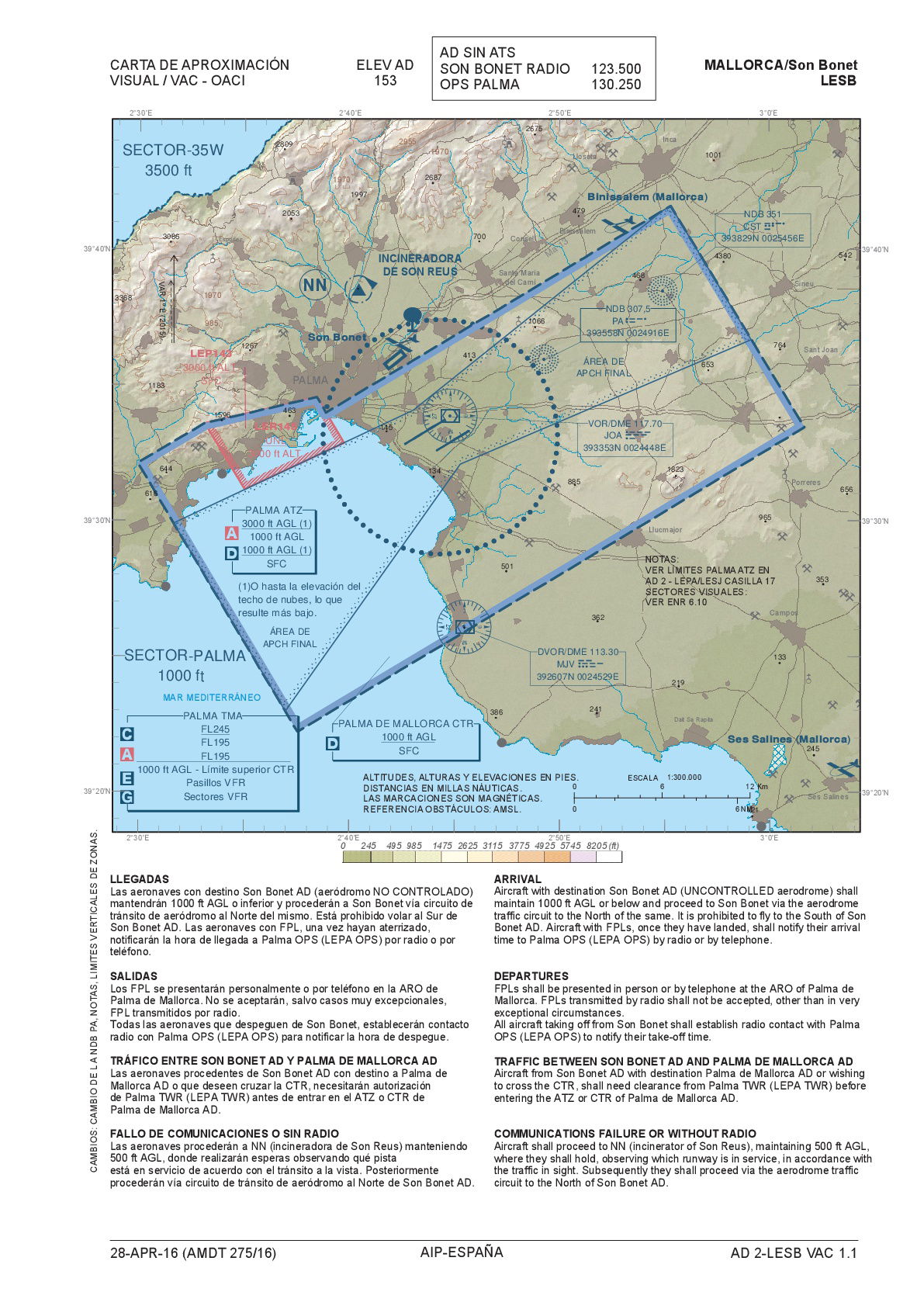
Airport Briefing: Mallorca/Son Bonet Airport (LESB)
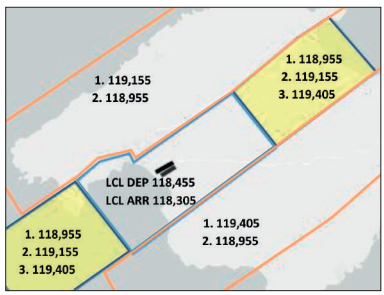

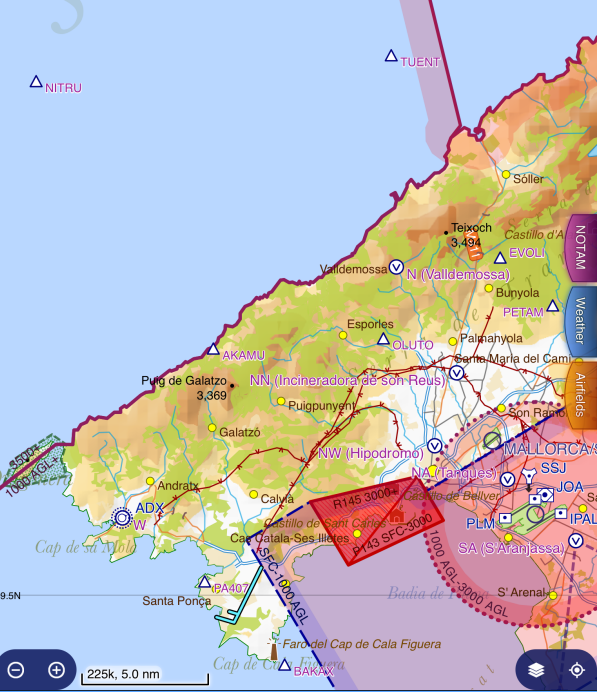
Son Bonet Airport (LESB), Palma de Mallorca
Telephone: +34 (0) 971 449 861
Son Bonet Airport timings
Summer: 1 April - 31 Oct
Airport open: 08:15 local time
Airport closed: 18:45 local time
Takeoffs and arrivals from/to Mallorca/Son Bonet AD must be notified to Palma de Mallorca aerodrome on the frequency Palma Operación 130.250 MHz.
It is mandatory to present a flight plan for all aircraft from/to Son Bonet (LESB).
Remarks: Mallorca / Son Bonet aerodrome
AERODROME CIRCUIT FOR ULTRALIGHT AIRCRAFT (ULM)
ENTRANCE TO THE CIRCUIT:
– North: Maintain 1000 ft AGL or lower, ULM traffic will proceed to enter circling at mid-tailwind, always circling north and in a circuit shorter than that used by other traffic.
– South: Proceeding parallel to the runway at 1000 ft AGL or lower, within the outer perimeter of the aerodrome and maintaining said altitude until entering half downwind to join the circuit.
CIRCUIT OUTPUT
After takeoff, ULM aircraft must fly into a downwind position north, before leaving the ultralight circuit.
In any case, you must AVOID ENTERING THE PALMA CTR (Controlled Airspace).
ATIS - Automatic Terminal Information Service
METAR: 128.275 Automatic weather information is broadcast in English and Spanish with a 5 sec pause). H24 half hour.
Weather
Palma de Majorca has Mediterranean climate with mild and stormy winters and hot and dry summers. Most precipitation falls in October and December.
Wildlife Hazards
Bird activity exists around the airfield.
Suggested Alternates
Palma de Mallorca (LEPA/PMI)

Nearby Airfields
Binissalem Aerodrome (LEIS)
Runway 04 / 22
18 km from Son Bonet Airport
Student pilots are NOT authorised to land at Binissalem Aerodrome which is an uncontrolled airfield.
Binissalem Airfield comprehensive brief can be found here
Check ENAIR / Guide VFR Spain for the latest Binissalem Aerodrome charts here.
About Binissalem aerodrome here
Binissalem Aerodrome Airport Guide guide here
